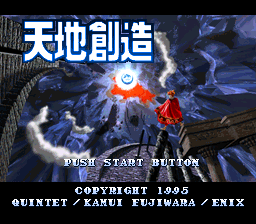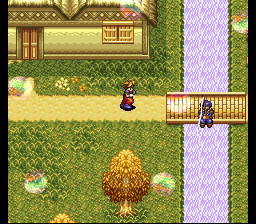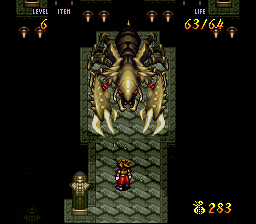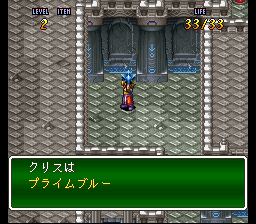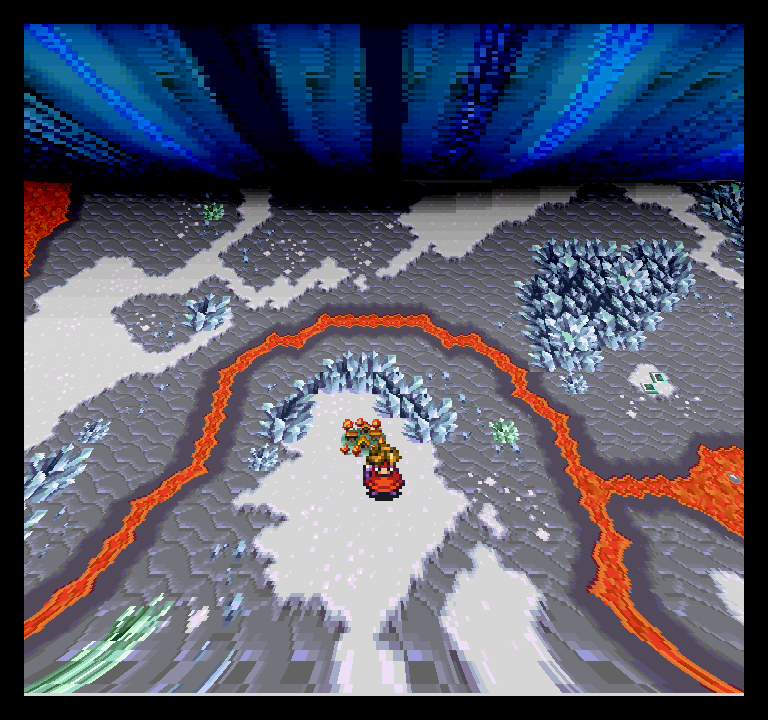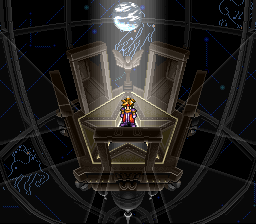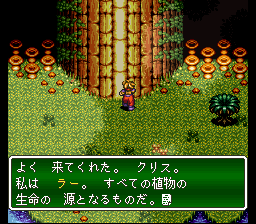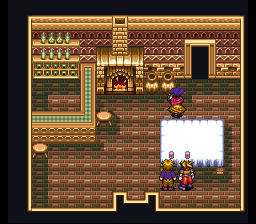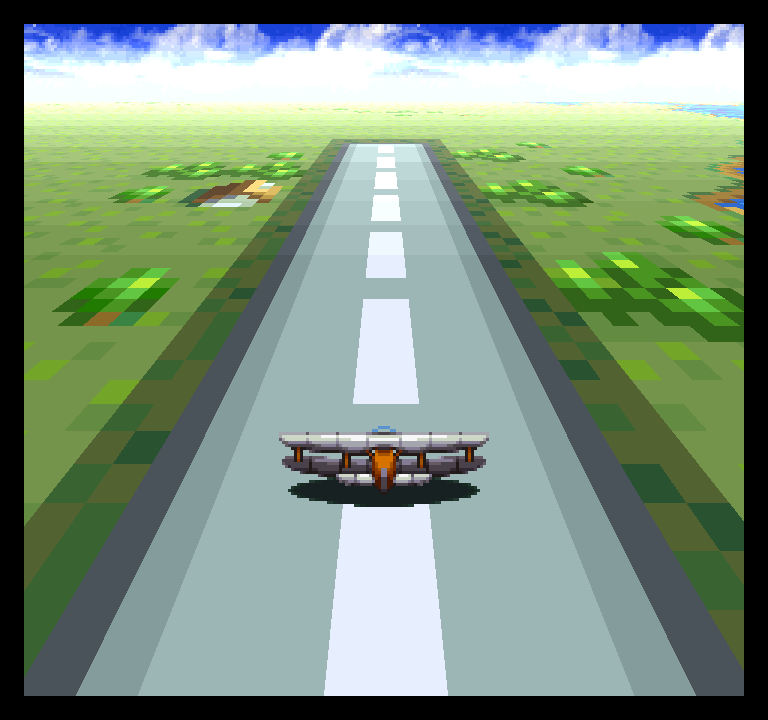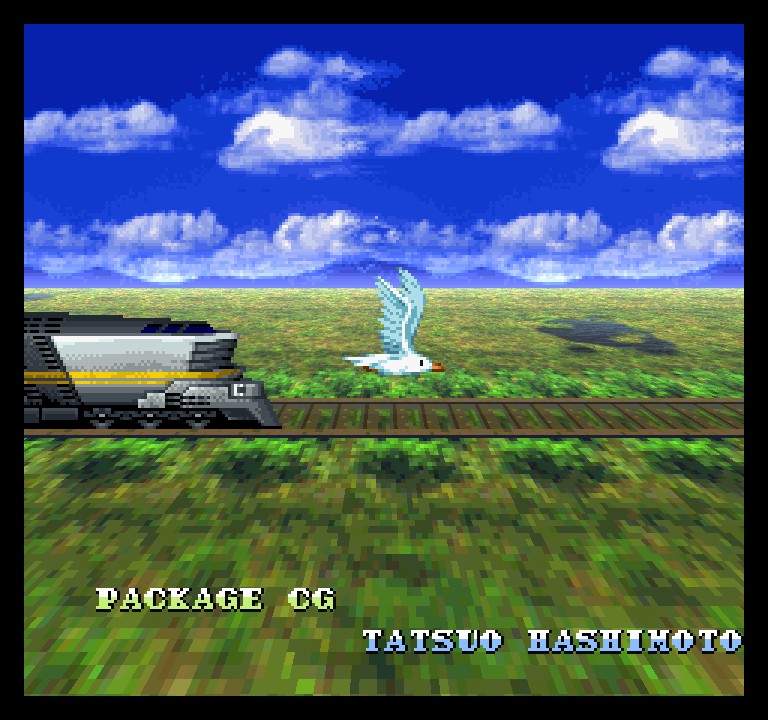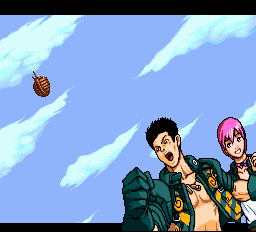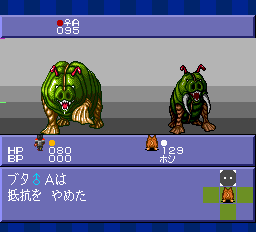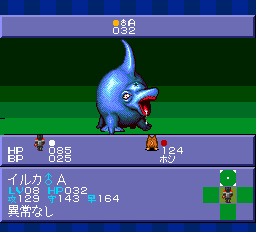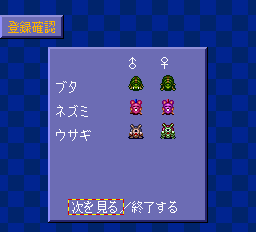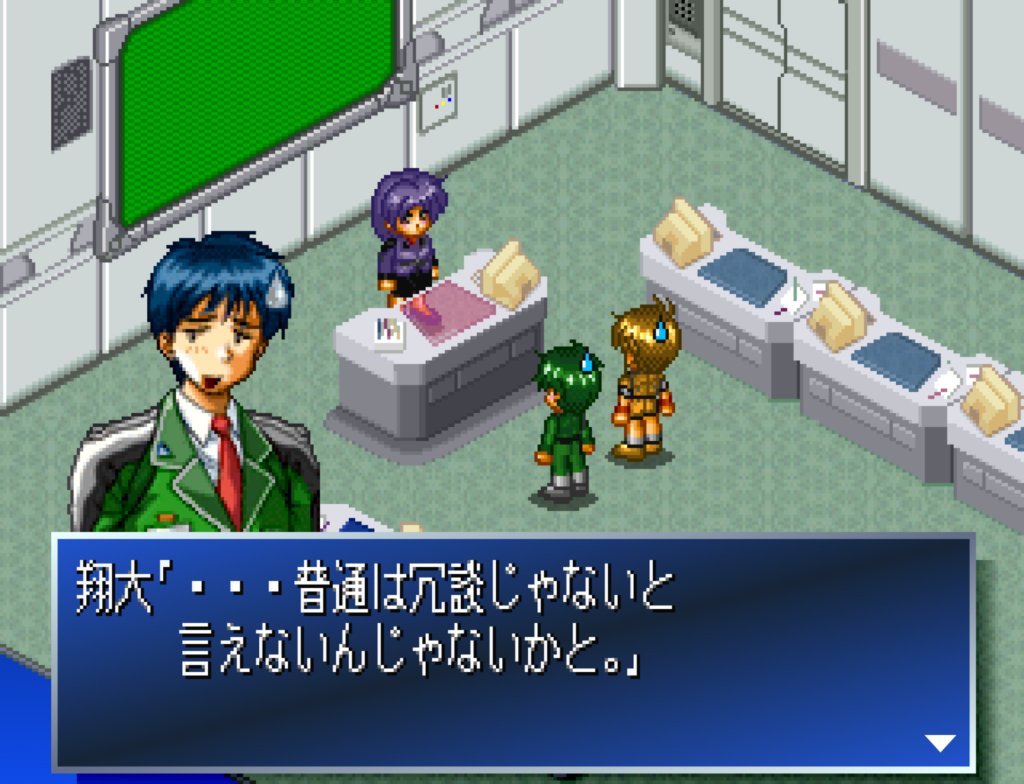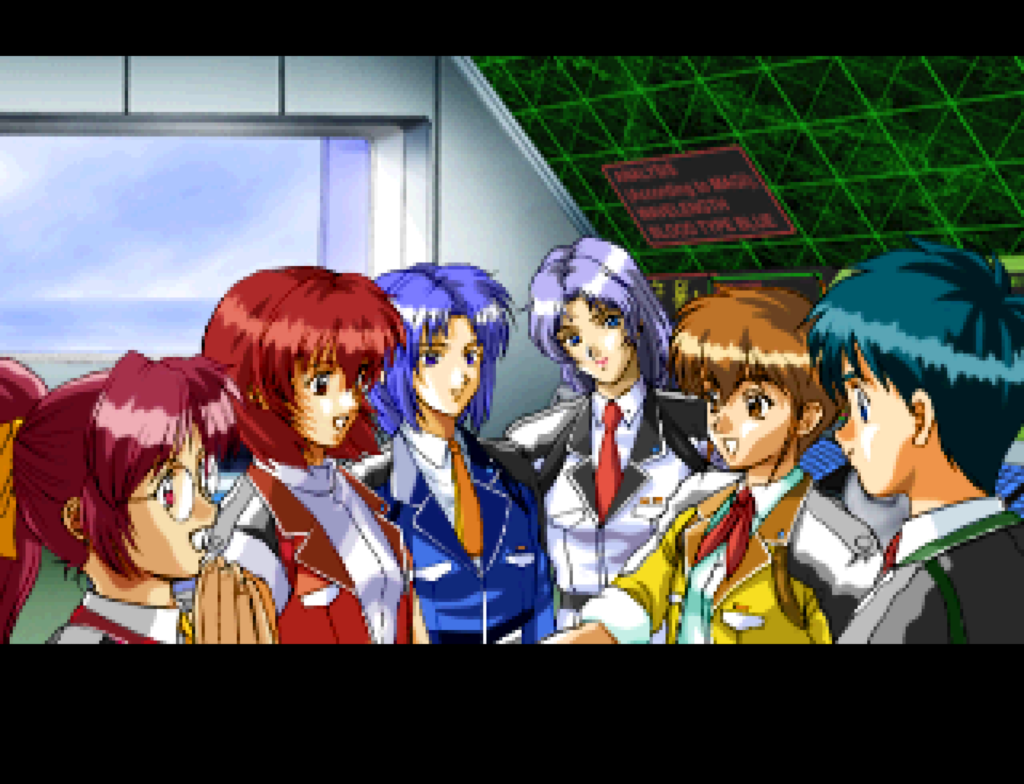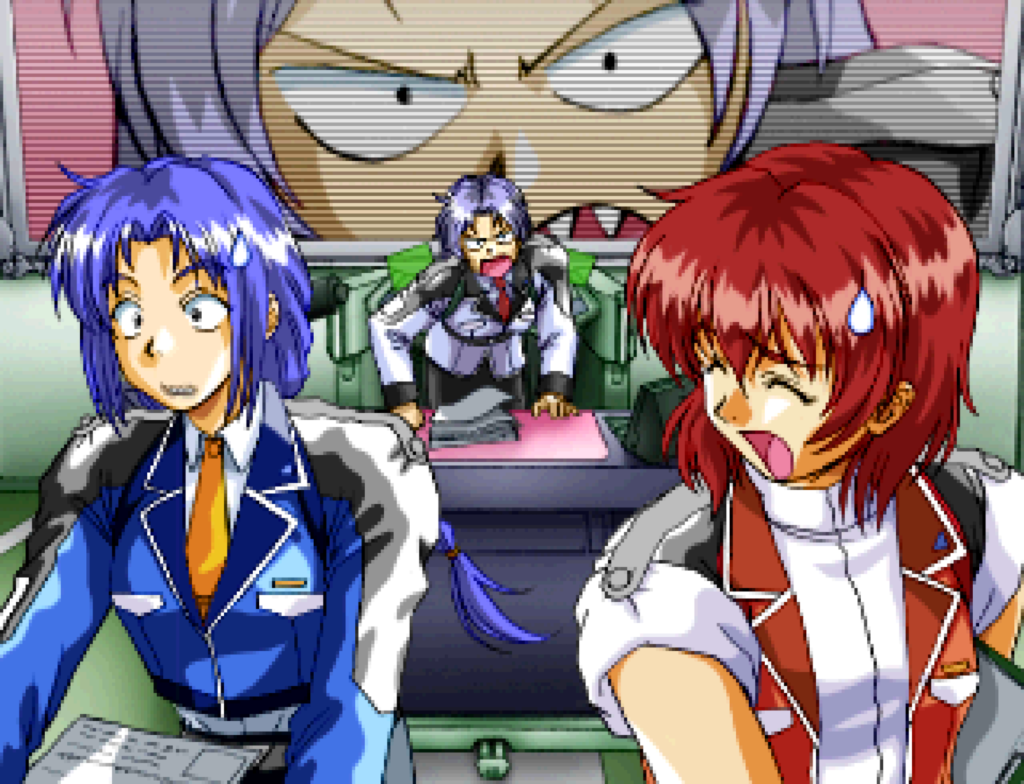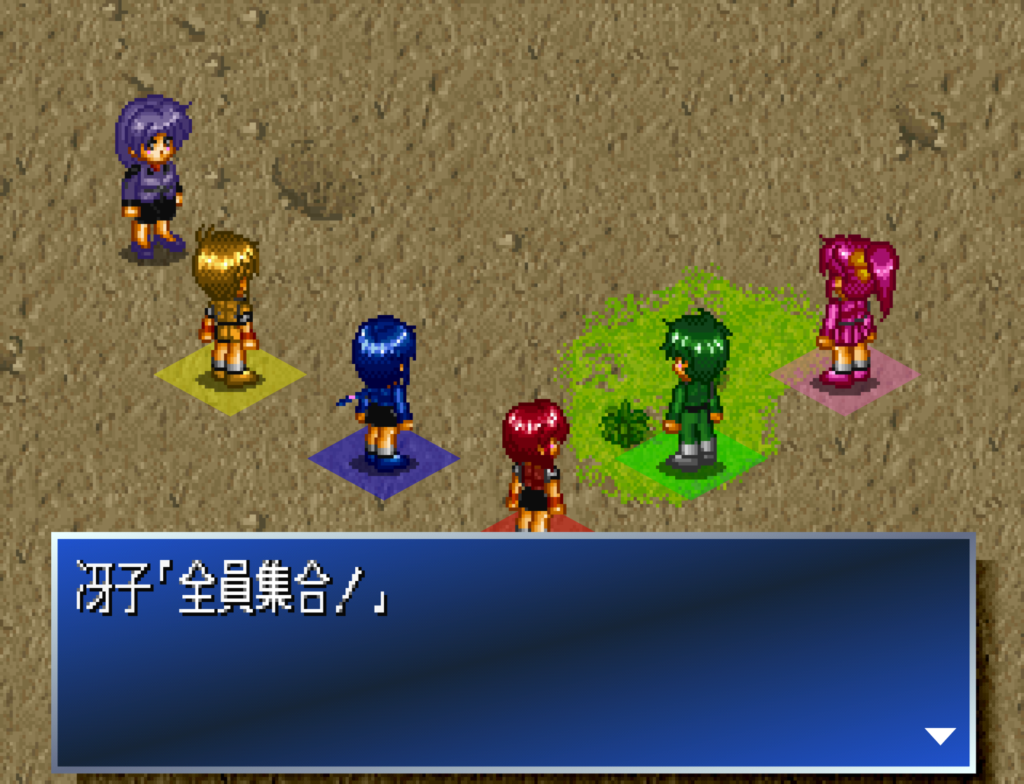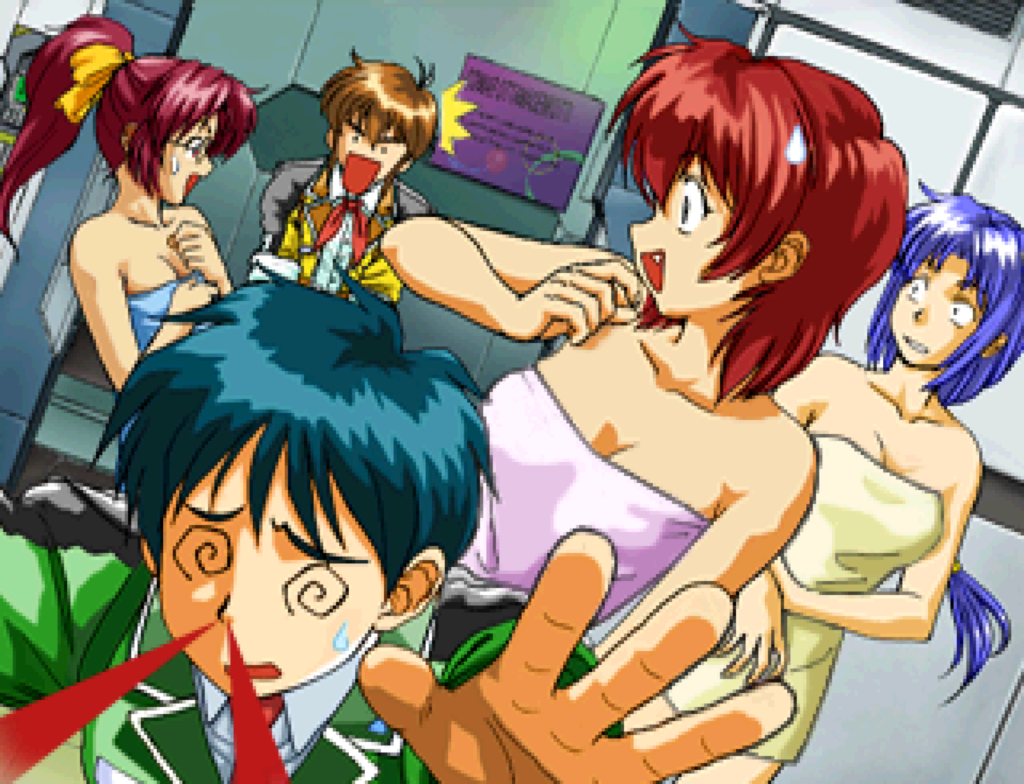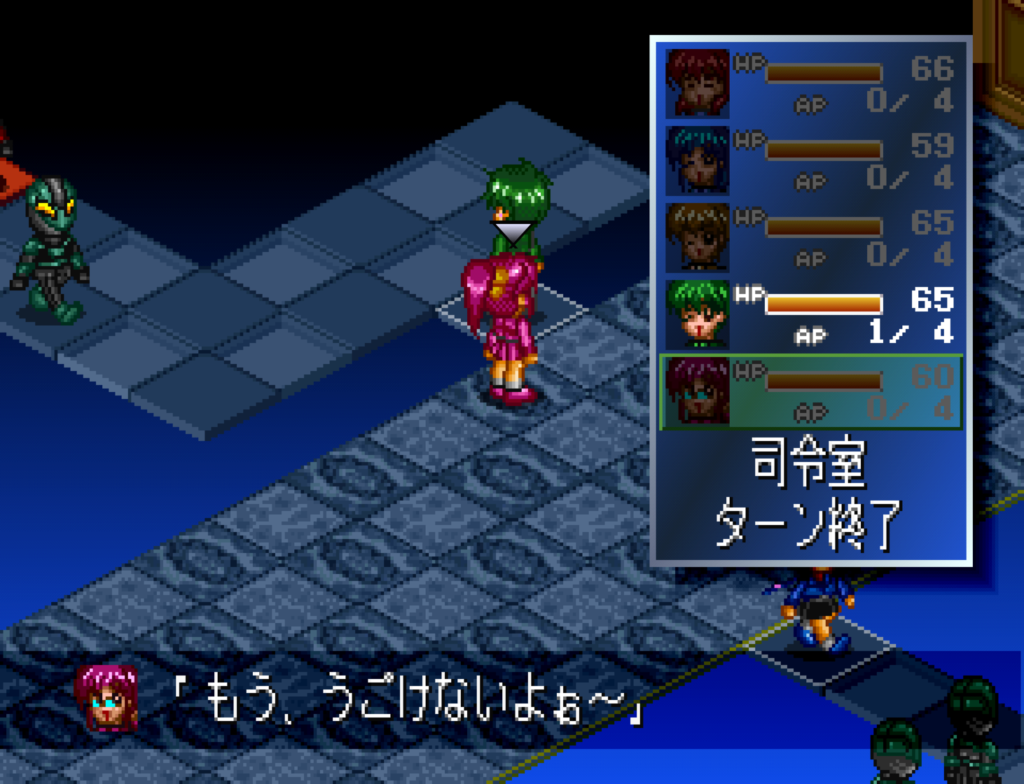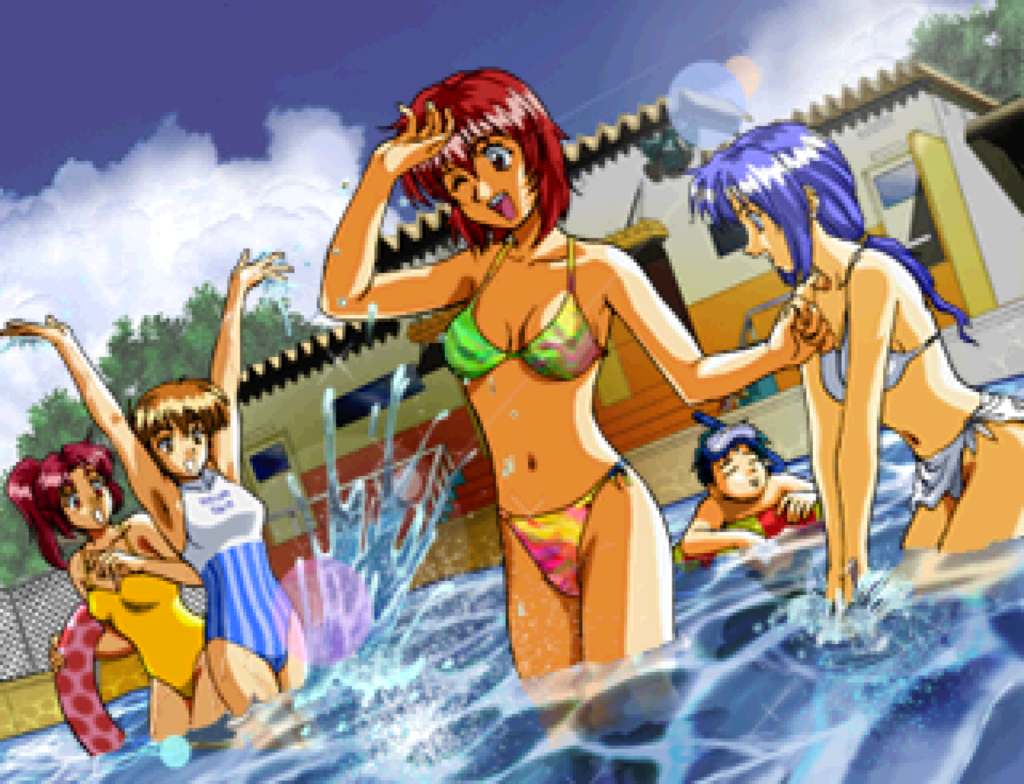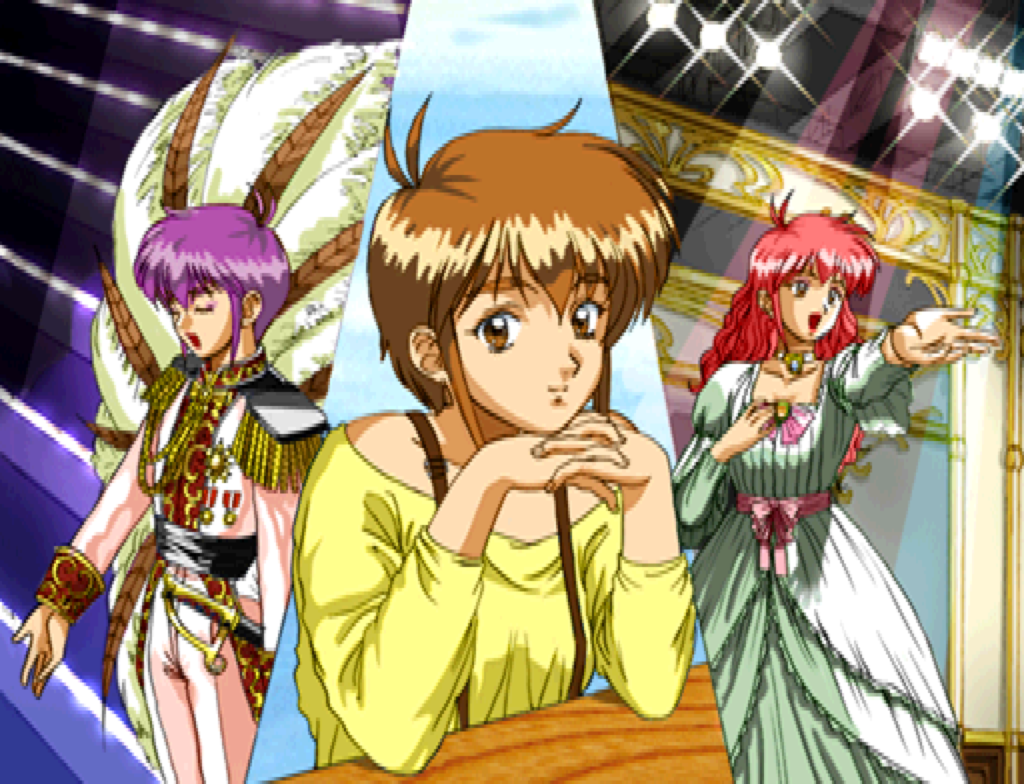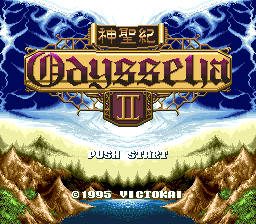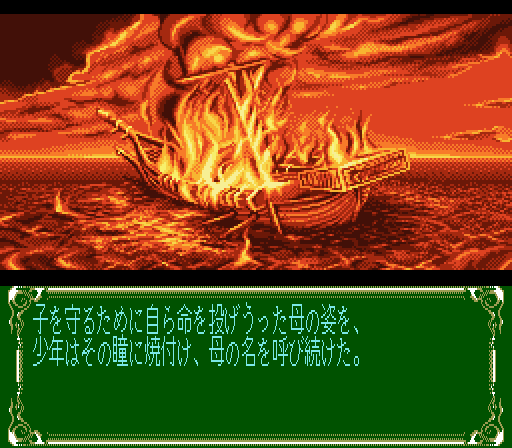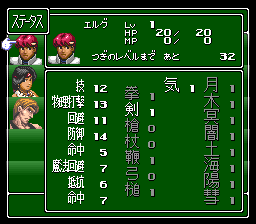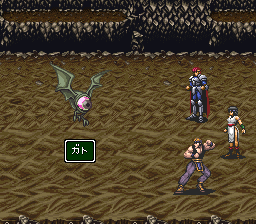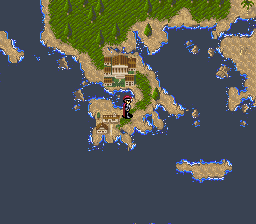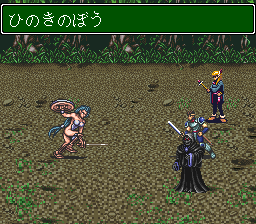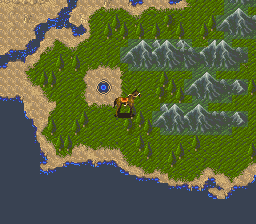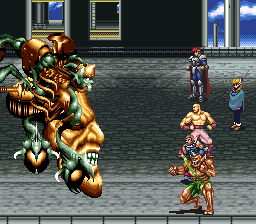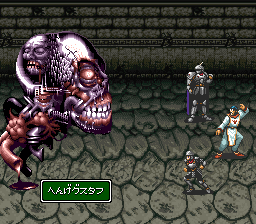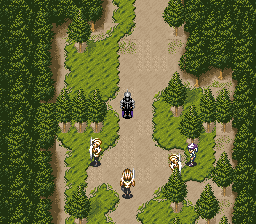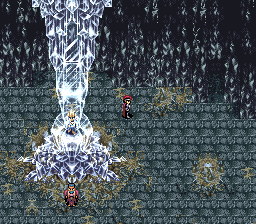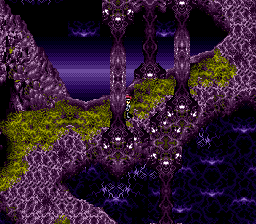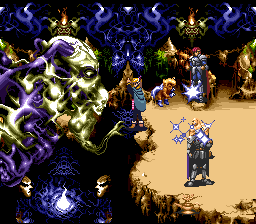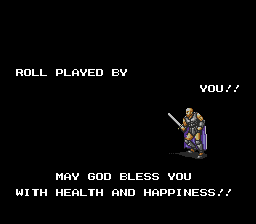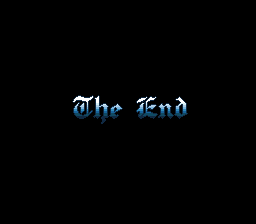Shinseiden Megaseed Rebirth Chapter (神聖伝メガシード 復活編), released 7/4/1997, developed by Banpresto
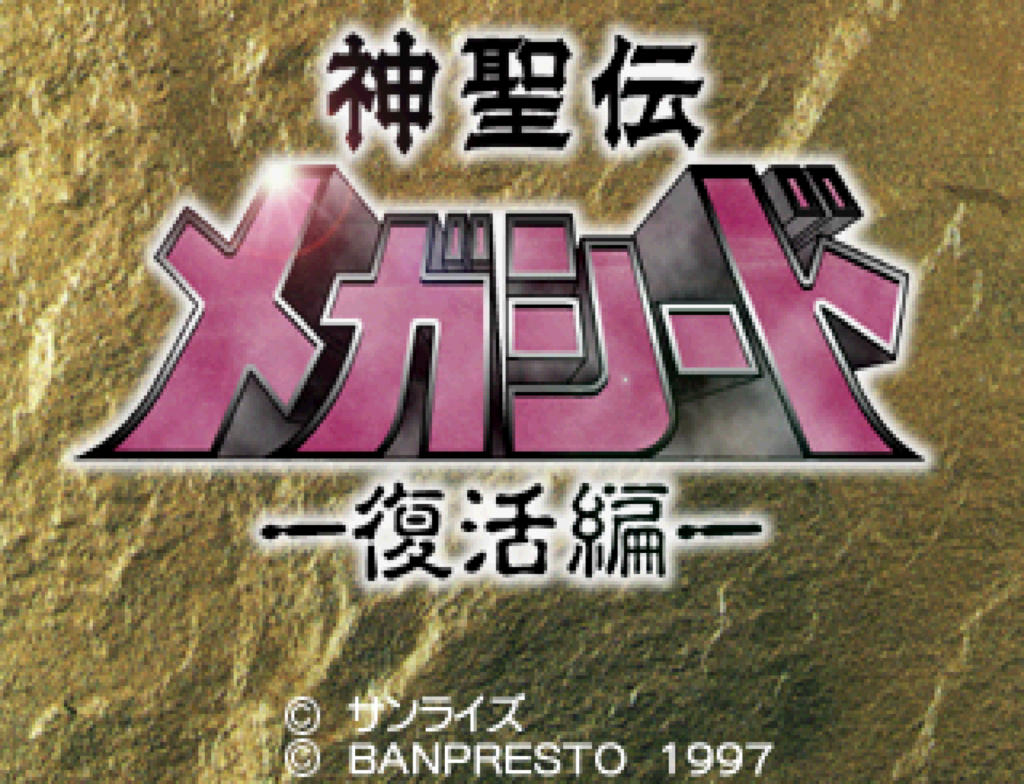
This game was a joint production of Sunrise and Banpresto, and it was an attempt to make a game that would resemble the various tokusatsu hero series and super robot anime. As the addition of the subtitle shows, this was conceived as possibly being a large franchise taking place in several time periods over a number of games, anime, etc But this presumably depended on the sales of this game — since no other media ever came out in this franchise, it must not have sold well. (There was a “creation chapter” single manga volume that came out a few months before the game that covered the backstory that is narrated at some point in this game).
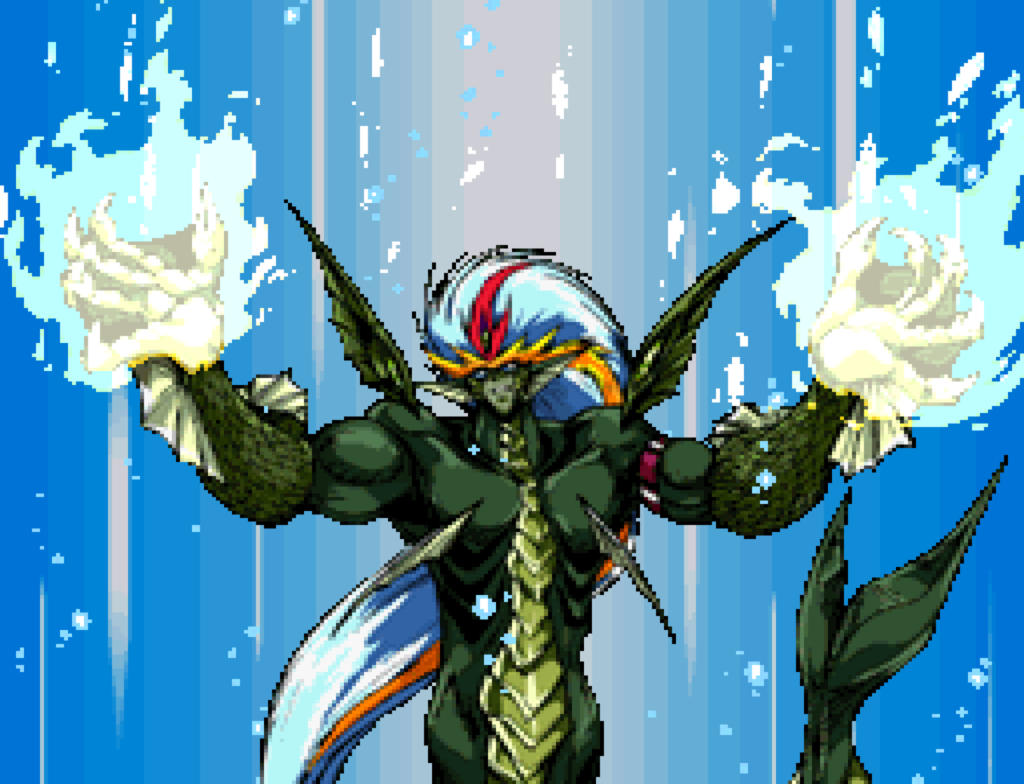
The storyline does feel like the genre they were trying for, and the visuals are relatively good (with both the special attacks and the pictures in the story sequences). Unfortunately the gameplay is lacking — I’ll cover this first and then do the story afterwards.
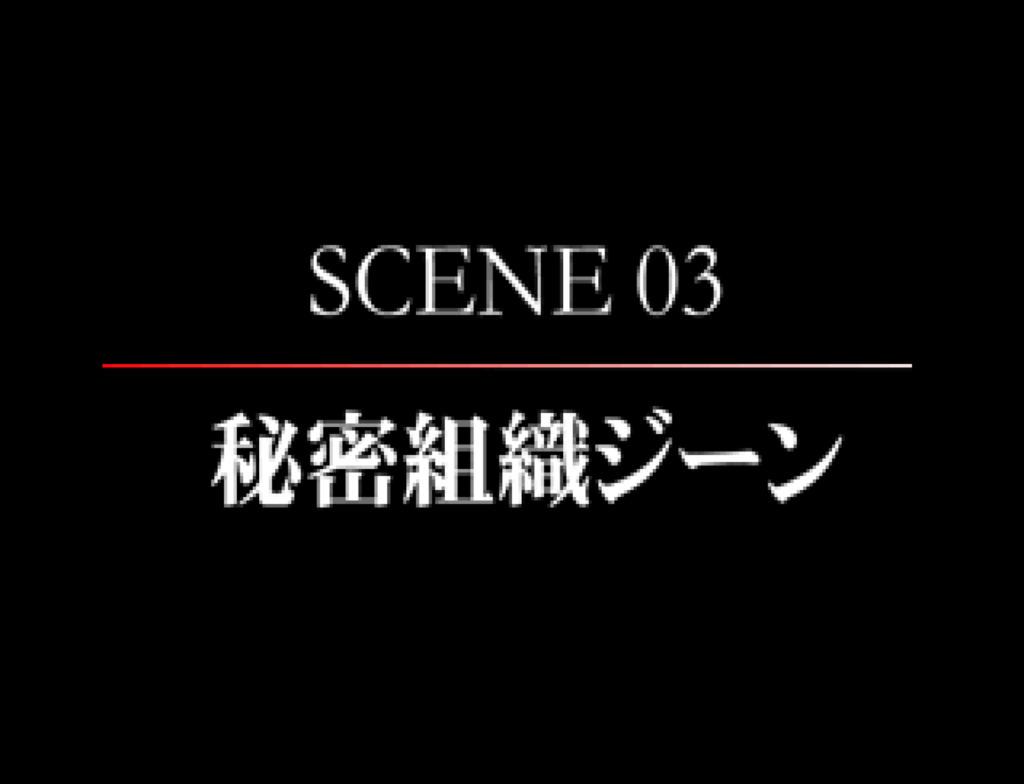
The game is made up of 14 “scenes”. Each scene has story and then a first battle. After this battle comes the only chance to improve your characters, spending roughly 3000 “guts points” to raise stats. It costs the number of GP as the value you want to raise the stat to — that is, if DEF is 100 and you want to raise it to 101, it costs 101 points. Each stat can be upgraded max 5 times. As far as I can tell, the GP you have to spend is a fixed value (I think 3000, although you also save whatever you didn’t spend last time). Since there are no items or money, that means that defeating the enemies in the battle has no purpose other than to complete the stage goal. If the goal is to defeat the boss, you will gain nothing by beating any enemies other than the boss.
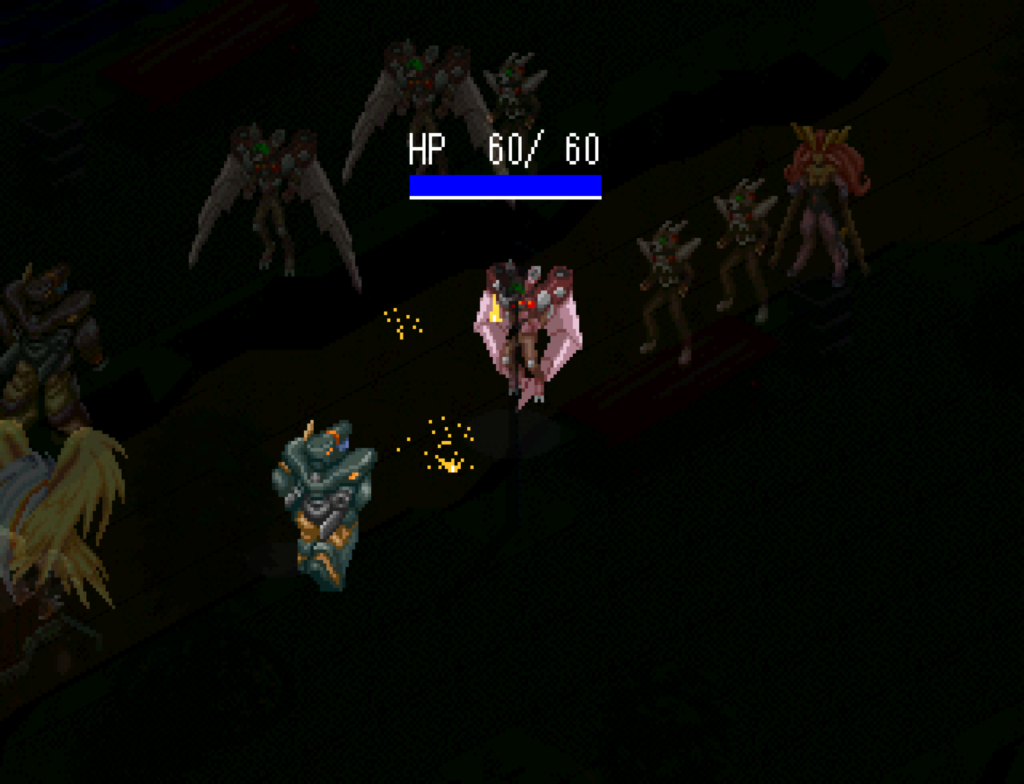
You have anywhere from 2 to 6 characters in the battle. All moves except basic attacks cost BP, and for the two “biofighter” characters, they lose some BP each round. The biofighter characters begin in human form, and it takes a turn to transform them. The main character has multiple forms, but to switch forms you have to first take a turn going back to human form, then choose the new form (a total of 2 turns). Switching forms is essentially useless because of this. If the Biofighters run out of BP they revert back to human form.
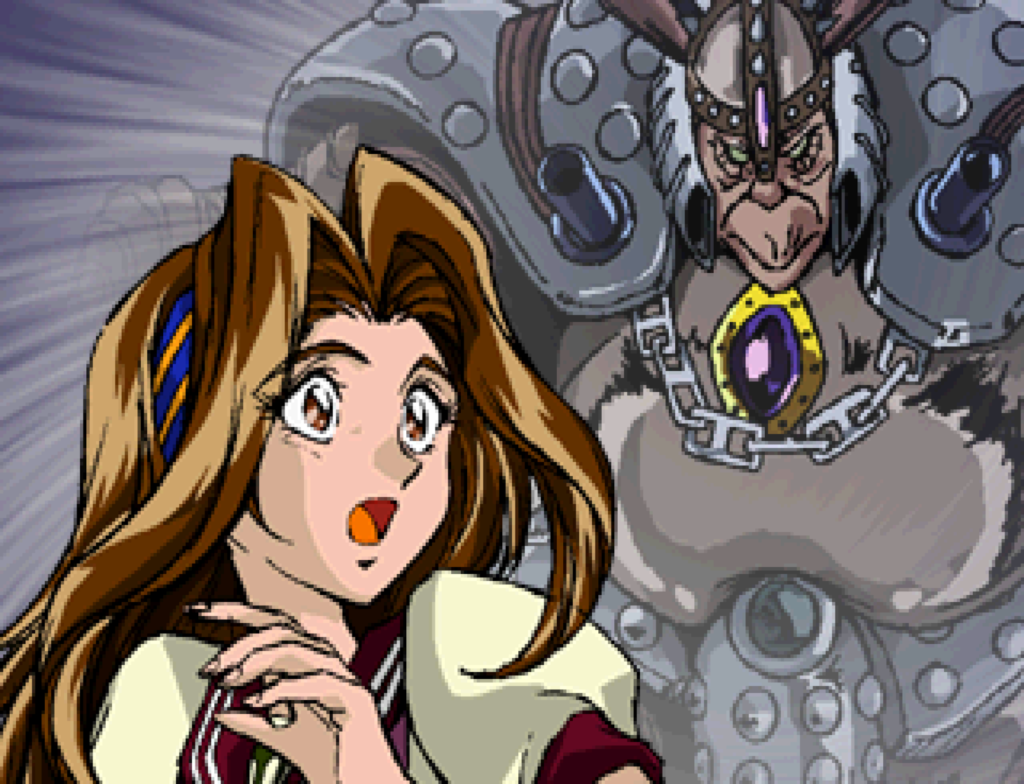
The fatal flaw of the game is how difficult it is to recover BP. The only way it can be done is to go to an armored vehicle that is around on some (not all) stages. The vehicle cannot move. It takes several turns to recover the BP and then once you leave the vehicle you are in human form. Because of the limited number of units in each stage, recovering in the vehicle basically is not an option unless you are at a point in the stage where you can win without any further attacks by the character in the vehicle. Otherwise, the enemies will simply surround the vehicle and destroy it before you can recover enough to fight again (if the vehicle gets destroyed with someone in it, that person dies). This means that in every stage, you are essentially limited by the BP of each character, and to a certain extent the HP although there is one unit that can do a limited amount of healing.
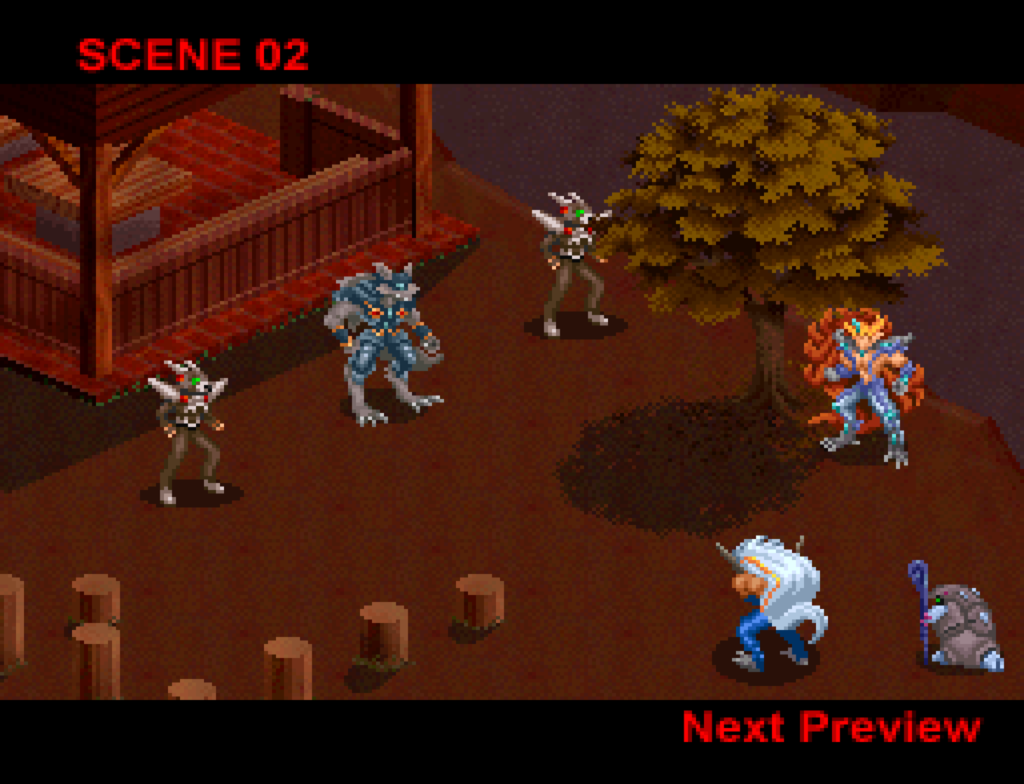
Because of this, I found that essentially the only option on most stages is to go directly for the boss when the goal is to beat the boss (which is most stages). You simply cannot afford the BP it takes to beat the grunts, and there is no purpose to doing so because you don’t get any XP, money, or anything like that. If either Biofighter dies you get game over, but the other characters simply leave for that battle.
So the gameplay is basically crap, I think. It had some good ideas but they just botched the execution so badly that it’s maybe not a surprise that there was never a followup game. I actually quit on the final stage because I could not beat the first part of the map and didn’t care to try anymore — another C grade game in what is shaping up to be an overall poor year for SRPGs. Fortunately we still have Langrisser IV and Shining Force 3, at least. Anyway, now for the story.
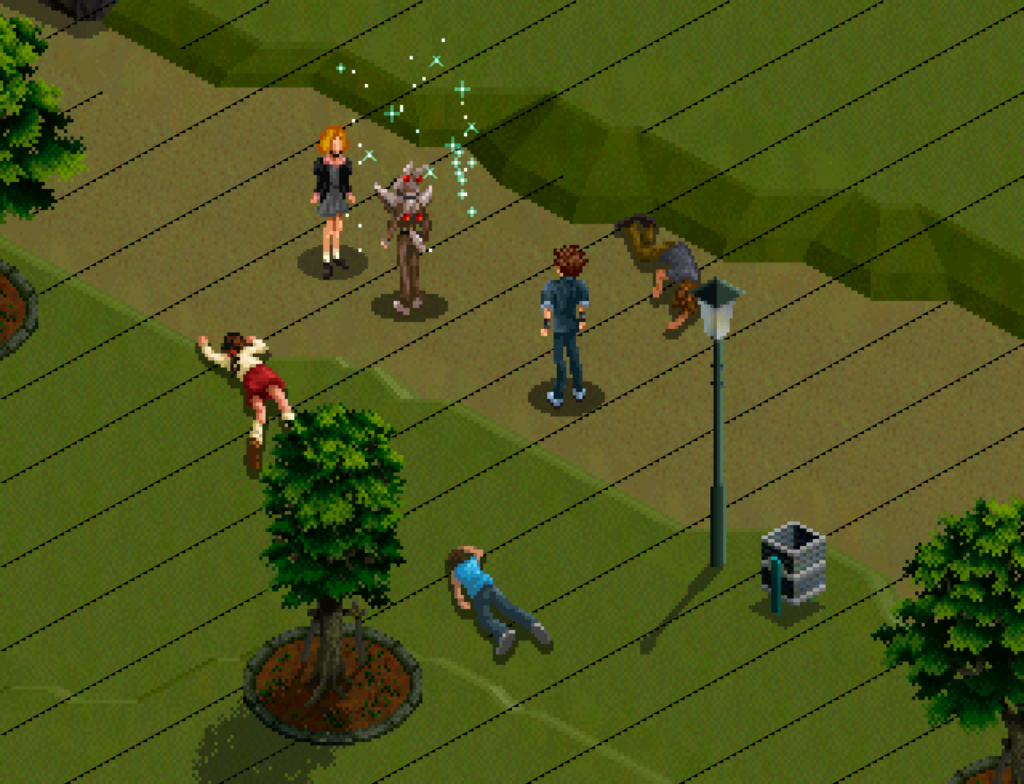
The story is not bad, aside from the main character who is an insufferable dick. Yuuki is the main character, who begins walking home from school with friend Miyu. There’s an explosion and some alien enemies come to kidnap Yuuki’s sister Ruma, who they seem to be looking for. Yuuki tries to protect her but gets killed. A little robot named Eddy appears and sees that Yuuki has the Megaseed ability, and revives him by turning him into a Biofighter — this is apparently only the second time this has succeeded. Yuuki has now transformed into a beast, and attacks the enemies trying to save Ruma.
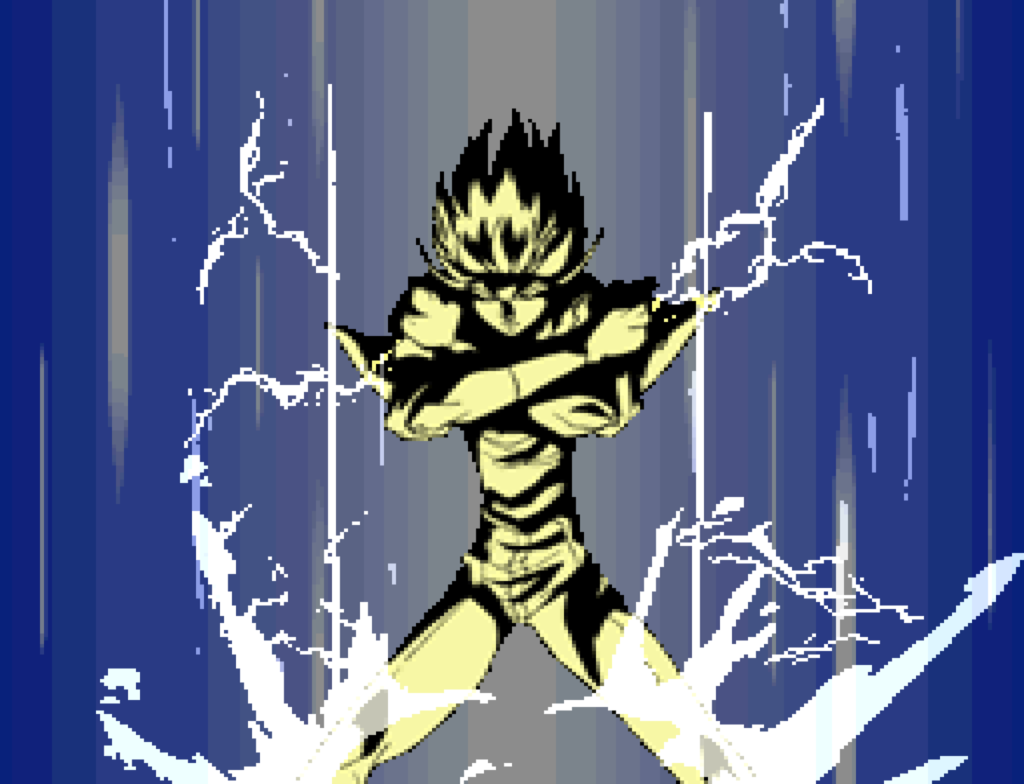
But Ruma gets taken anyway. After the fight he goes back to being human, but when more enemies appear, he goes back to Biofighter again by Eddy’s interference (he doesn’t want to turn into such a beast again). He also gains a new transformation, to a water Biofighter that can deal with the boss in the water.
Later, he talks to Miyu again and hears that enemies are attacking Shinrin Park; Yuuki hopes that he can find Ruma there and heads out. A mysterious man shows up investigating as well. Enemies show up again — Yuuki doesn’t want to transform but Eddie forces him to again. It turns out this mysterious guy is also a Biofighter.

One of the “Three Generals of Baidner”, Dr. Min, arrives and the other Biofighter leaves to fight him. Yuuki is left to fight the very fast Kreutzfeld, but he gets a new speedy transformation to beat him. Yuuki passes out and the other Biofighter takes him back to the base of the Jeen, an arm of the military that is dedicated to fighting the Baidner. Yuuki reluctantly agrees to join them, not because he cares about saving the world, but he hopes that he’ll find his sister (every chapter contains at least one scene where Yuuki sulks, blows up, yells at everyone, says he doesn’t care about anything but his sister, and often screws things up by going off by himself. Even when he learns that other people have had their whole family killed by Baidner he still just pouts and yells and goes off by himself. Even when this results in other people getting killed, he continues to pout and yell and insult everyone and say he doesn’t care about anything but his sister. I know this is a common anime trope but this story seems to take it to an extreme that leaves the main character completely unsympathetic.)
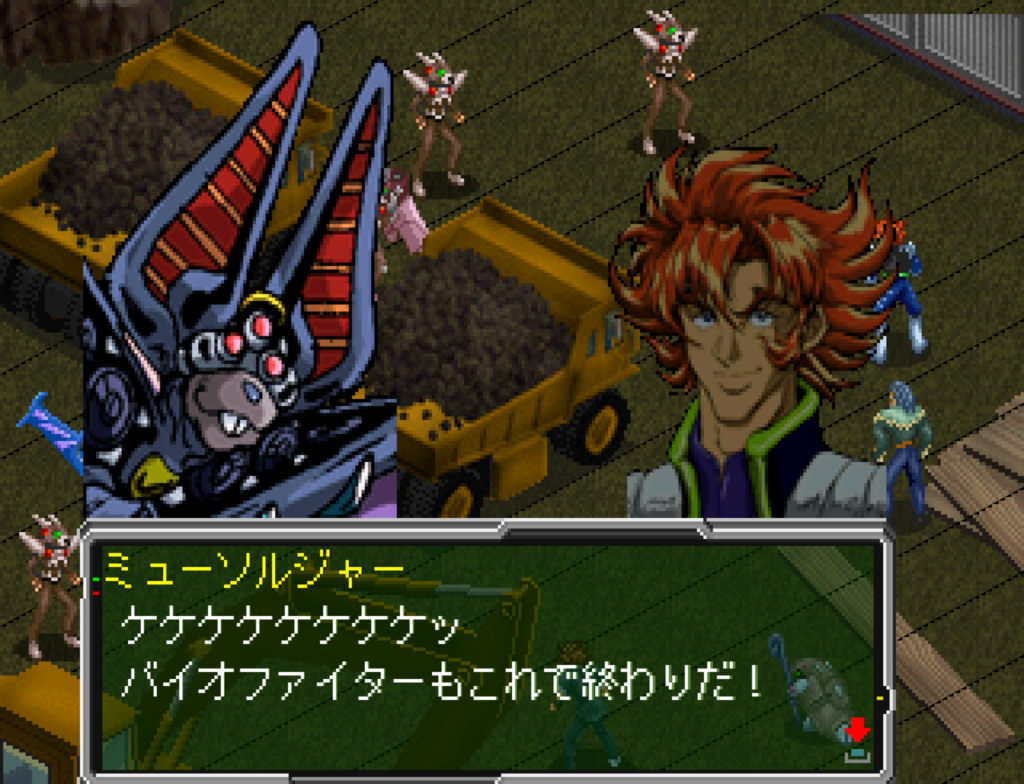
It turns out that Yuuki is the only “perfect” Biofighter they have found. Sei, the other Biofighter, was created by Jeen and so is not perfect. Dr. Min can control him in battle, seemingly because of this.
The other two members are Zek and Yui, normal humans, but they get some bio armors after a few stages that allow them to fight. As the story continues we are introduced to other enemies (“Myu fighters”), and the other two generals of the enemy force. Also a creature called Breth-O comes in a capsule from space; apparently this robot thing was created to kill the Biofighters, but it doesn’t seem to work correctly and so often leaves the fights, attacks the other Myu Fighters, or is ineffective. Yuuki also continues to develop new forms to fight the enemies.
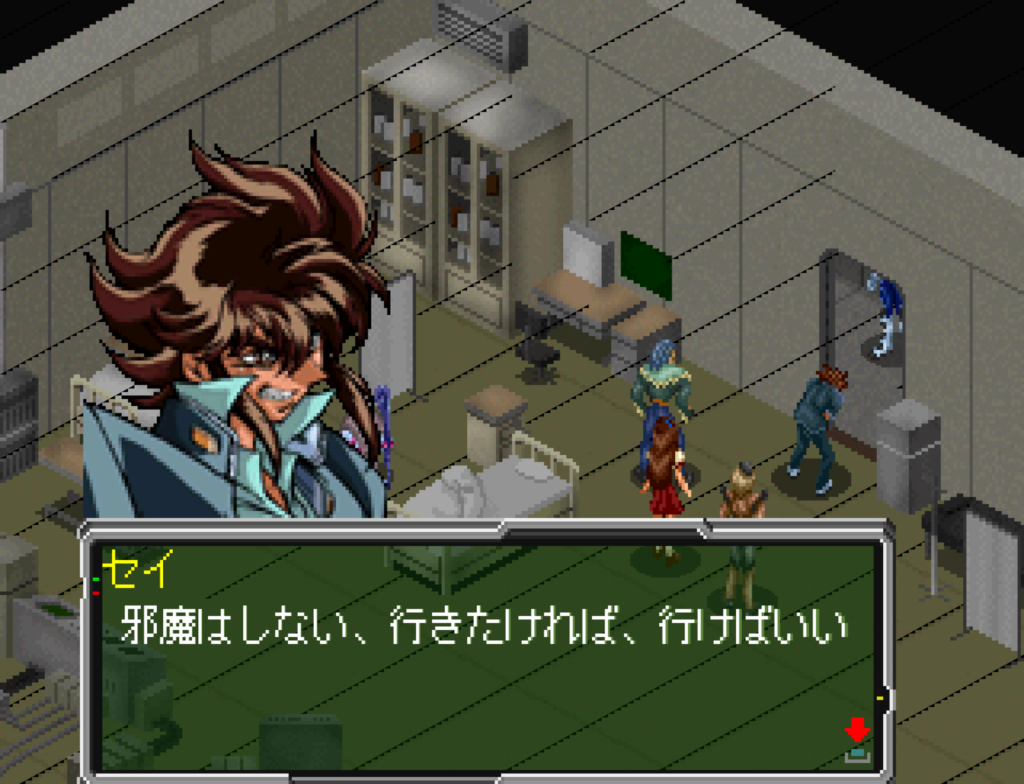
Yuuki eventually learns that the enemies are doing some kind of experiments on Ruma, who is apparently someone they’ve been searching for.
Stage 11 is strange because one of the generals Rigna revives all the previous bosses we’ve fought, but you only have to kill one (who is in the water and is annoying to reach). I feel like this was done because given the way the system works, there’s no way you could have killed all the bosses before running out of resources.
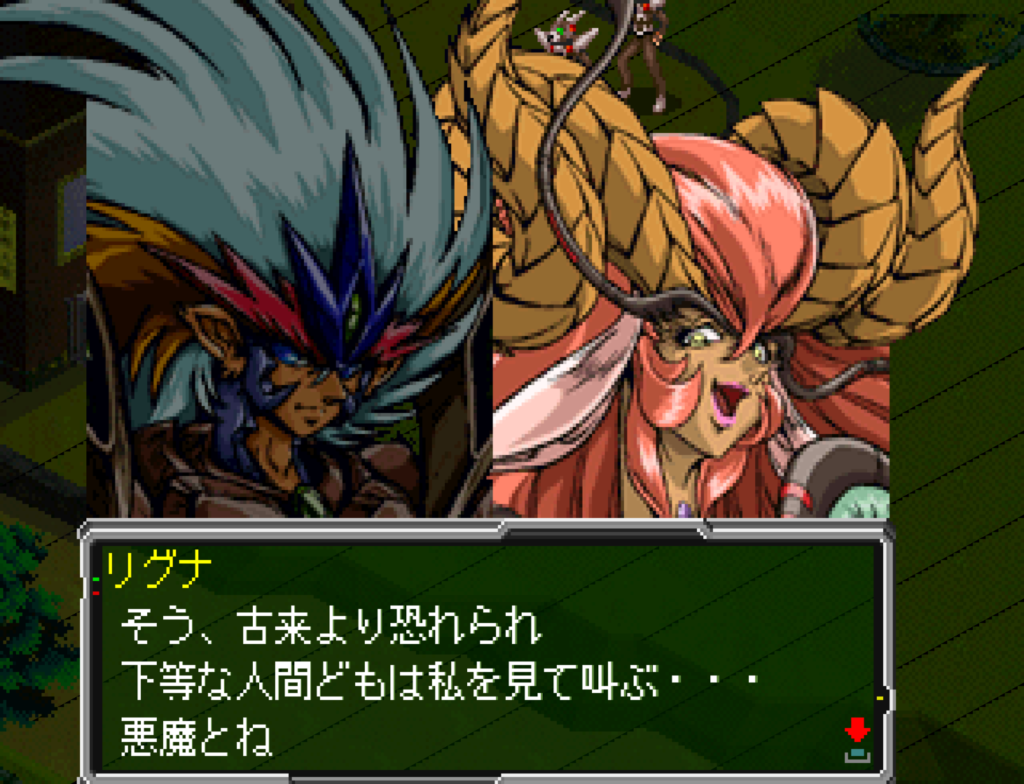
Eventually we learn that Bres-O is working for the Dark God Meizas, who seems to be the head of the Baidner. Meizas was created by an ancient culture to protect the world, but now sees the Megaseed/Biofighters as a threat. It also turns out that every person in the world has some Machinery Mark in their DNA that comes from Meizas and allows the enemies to theoretically control everyone (this is how Rigna controls Sei). I was a little lost here; I think the idea is that this ancient culture was entirely destroyed but that Meizas was somehow able to preserve life by creating humans, who all have the Machinery Mark.
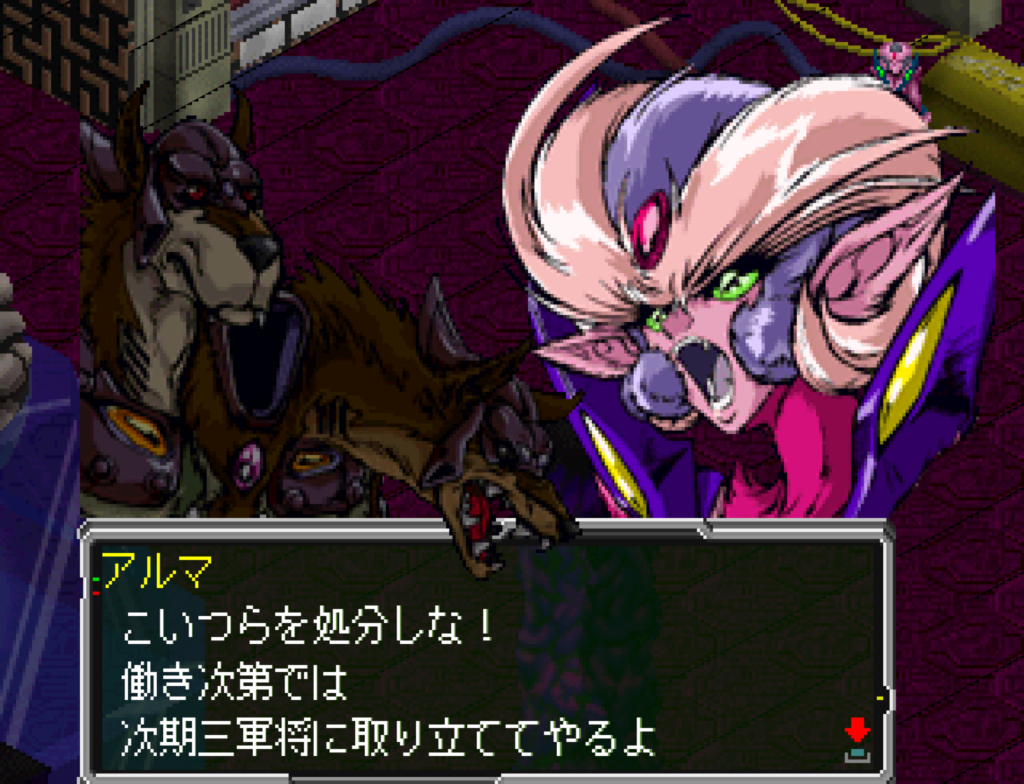
In Scene 13 we reach the Baidner base after defeating the 3 generals. Ruma is there, but she has been transformed into Aruma, another evil demon creature. But Ruma is able to fight for control from Aruma, and after she is beaten, Ruma completely rejects Aruma. The heroes then beat Meizas.
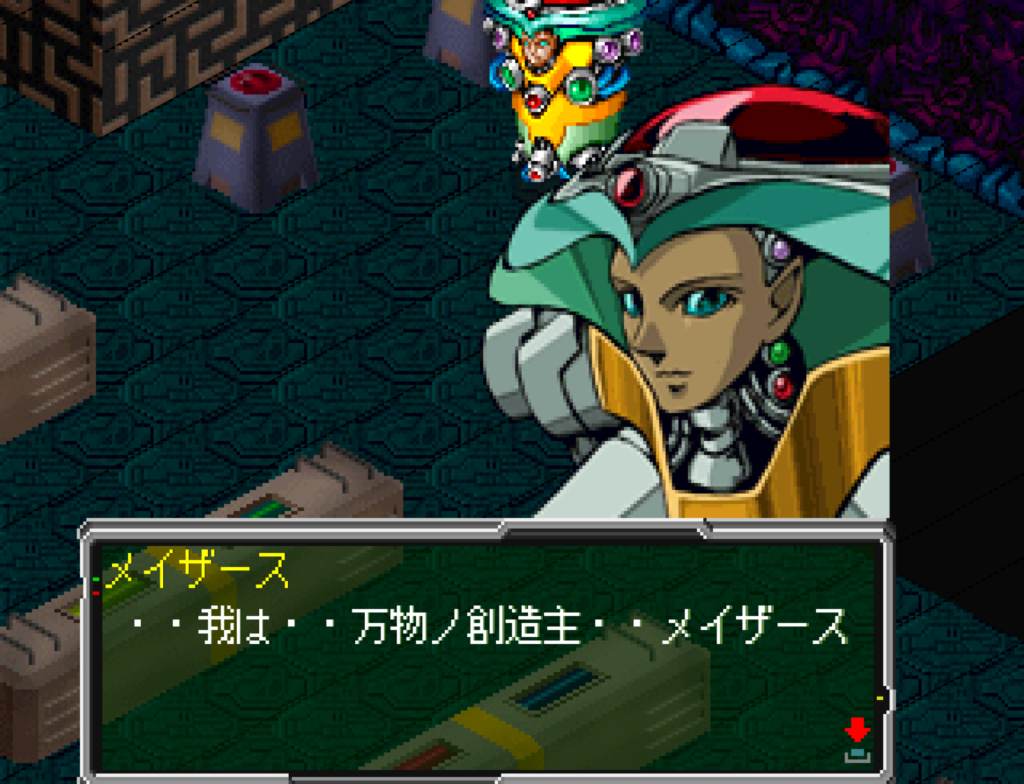
Unfortunately the Meizas they beat is just one terminal, and Meizas reappears and shoots a bolt of energy, killing Ruma. This seems to make Yuuki finally accept that he needs to fight for the world, not just for Ruma. They need to go to the moon to defeat Meizas for good — they can send Eddy and Yuuki there in the capsule that Bres-O used to visit Earth.
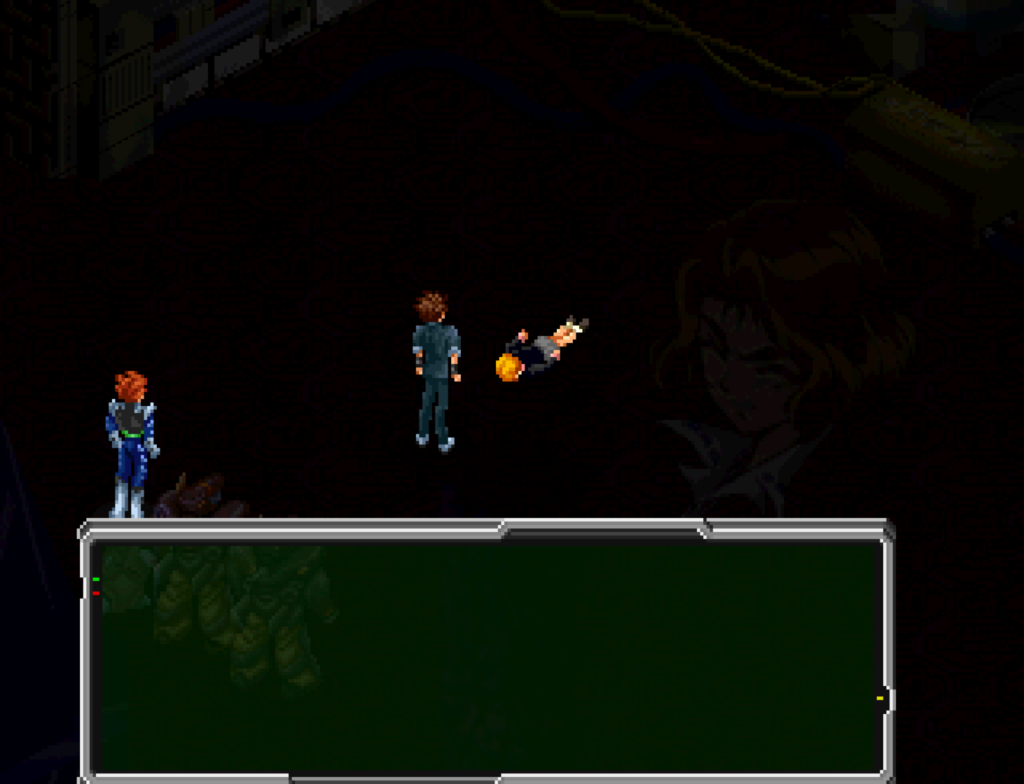
Scene 14 (the final one) is where I gave up. You have to defeat 5 Bres-O’s, without Yuuki or Eddy. I tried five times and I was unable to beat more than three of them before everyone died. Maybe I needed to spend my level up points differently, but I had no desire to try this anymore. I looked at a review that said how the story concludes — Yuuki goes to the moon and defeats Meizas, but as he is returning to earth they lose contact with the capsule, and the fate of Yuuki and Eddy is left open as the game ends.
So this is yet another game that shows promise but is not worth playing. It barely qualifies as an SRPG and there’s just not that much good about it.
